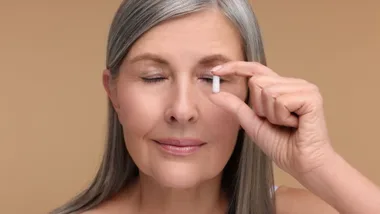What to do if your day at the beach takes a turn for the worse
Heat exhaustionIf it’s so hot that you sweat excessively, you can get heat exhaustion, and this can cause your body to become dehydrated. Symptoms include nausea and vomiting, headaches, muscle cramps, tiredness and feeling light-headed. If someone does show signs of heat exhaustion, lie them down somewhere cool with a folded towel under their head and raise their legs to improve blood flow. Sponge them with cool water – use sea water if you have nothing else – and fan their wet head. Give them water to drink and, if possible, add a teaspoon of salt to a litre of water and make them sip it regularly to replenish the salt and fluid they’ve lost. Cooling them down is vital – if they remain overheated, they could develop heat stroke, which can be life-threatening. Heat stroke results when the body’s cooling mechanisms stop working properly.
Danger signs include rapid and shallow breathing, fits and confusion. If it’s not treated, it can lead to heart or kidney failure and brain damage. If you suspect someone may have heat stroke, call an ambulance immediately and cover them with a damp sheet or towel while you wait. Children and the elderly are particularly vulnerable to heat stroke and you’re more likely to get it in areas of high humidity.
Stings
Jellyfish: Stings from jellyfish are usually harmless but can be very painful. Don’t rub the affected area, as this will make the pain worse. Spray with sea water (don’t use fresh water – it can aggravate the sting), then carefully pick out thetentacles (the water will cool your skin and make these easier to remove). Then apply a cold compress to the area for 10 minutes to reduce swelling. You could use an ice block or even a cold can or bottle of drink.**
Wasps and bees**: Scrape off the sting using a fingernail or something hard and thin like a credit card. Never squeeze the sting because this can inject more poison into the wound. Place ice or a cold compress onto the affected area until the pain eases. In some people, stings can cause anaphylactic shock. If they tell you they’re allergic or swell up excessively and have trouble breathing, get medical help.
Sand in the eyesThis can really hurt and it may be tricky to remove. Rinse the eyes immediately with cold, clean water. Ask the person to look up and gently pull their lower lid down. Slowly splash water into the eye. Repeat, pulling out the top lid. Then carefully pull the top lid over the lower lid – this helps to cleanse the eye. They may need to see a doctor to check if the cornea has been scratched. If the eyeball has been grazed, antibiotic drops may be needed to stop infection. If the sand won’t come out easily, don’t persist too much – you could make it worse. Bandage both eyes so the eyeballs don’t move around and cause further damage, then get medical help.
Heat rashAlso known as prickly heat, this is an irritable red rash caused by increased sweating and excessive heat. The sweat glands become blocked, trapping sweat underneath the skin, and you end up with an unsightly and often uncomfortable rash. You may be able to control the rash by taking showers and dabbing calamine lotion on the affected area. Staying in the shade and wearing loose-fitting clothing may help reduce irritation. If your skin gets very itchy, see your chemist for a topic cream that may be able to help.
Sun burnIt’s crucial to avoid getting burnt in the first place because of the long-term damage it can cause, but if you do overdo sun exposure, get into the shade and cool the skin by sponging the burnt areas with water for at least 10 minutes. Don’t use ice-cold water as this causes the blood vessels to constrict and may damage the skin. Sunburn can raise your body temperature, so sip water often. Use aftersun lotion to soothe the skin. See a doctor if you develop a rash, blisters or a fever.
CutsWalking barefoot on rocks at the beach is a common cause of cuts. If you do cut yourself, try to avoid getting sand in the wound, as this can cause infection. As soon as possible, wash your hands and then rinse the cut thoroughly with clean water. Apply pressure to the cut with a clean cloth to stop the bleeding. If there is something stuck in the cut, fashion a loose bandage around the wound that doesn’t press on whatever is embedded, then get medical help. Raise the wound above your heart to control bleeding. If the bleeding is severe, get medical help straightaway.
Broken bonesKeep the broken bone as still as possible using a splint or a sling. For a broken arm, make a sling using a T-shirt or towel. Put it gently around the arm and tie loosely at the neck. If the person can’t move, cover them with a blanket while you call for help. Signs of shock include a faster pulse rate, cold and clammy skin, gasping for breath, dizziness and thirst. Shock can be fatal if not treated, so call an ambulance. Don’t give the person food or drink until they see a doctor – it could delay surgery.










